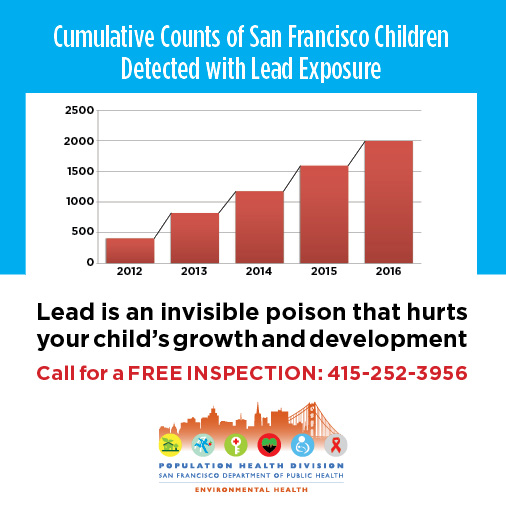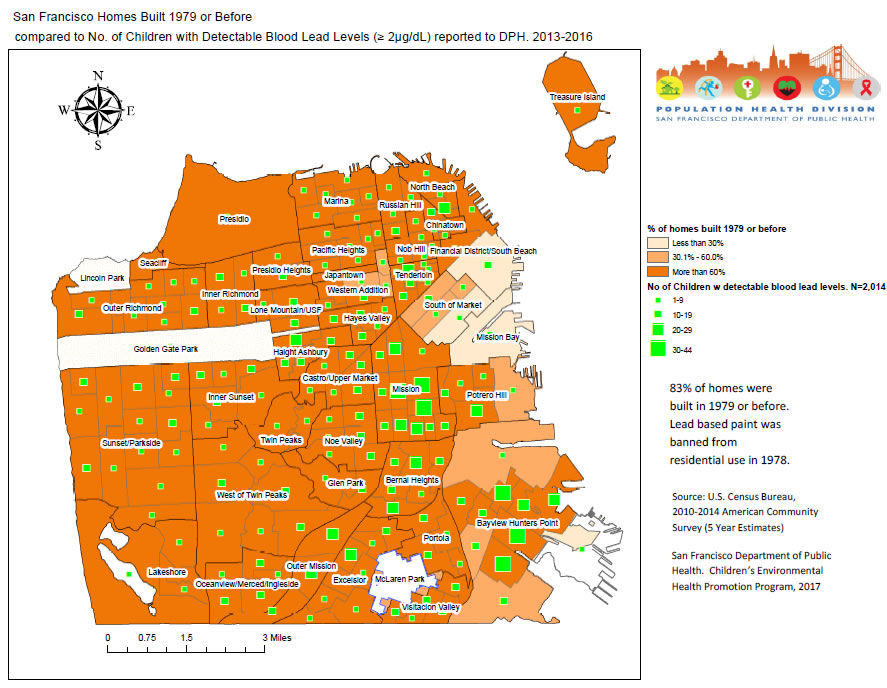- About DPH
- Our Services
- Our Programs
- Healthy Living
- Records, Permits & Licensing
- Knowledge Sharing & Collaboration
- Diseases & Conditions
- Training
Helpful Links
 Provider Referral Form
Provider Referral Form
(pdf)
Chidhood Lead Prevention Program
Children's Environmental Health Program
Lead and Children
Lead in Housing
Childhood Lead Prevention Program: Medical Provider Information

California Standard of Care for Childhood Lead Poisoning
- What are California regulations for anticipatory guidance, testing and assessment of children for lead exposure?
- What management guidelines should I follow when a child has a detected lead exposure?
Local Childhood Lead Prevention Program Support for Medical Providers
- How do I refer my patient to the SFDPH Childhood Lead Prevention Program for follow up?
- What information should I provide parents in San Francisco about lead exposure and potential health effects?
- Information that children can be harmed by exposure to lead, especially deteriorating and disturbed lead-based paint and the dust from damaged paint.
- Children are particularly at risk of lead poisoning from the time they begin to mouth objects and crawl, until they are 72 months of age.
- These bilingual Anticipatory Guidance posters (pdf) in your office can help fulfill Anticipatory Guidance requirements and encourage parents to have their child tested for lead exposure.
- This trilingual Health Hazard Advisory (pdf) connecting parents to the Childhood Lead Prevention Program for assessment of their own homes.
Staying Current on This Issue
- Why is childhood lead poisoning still an issue?
- American Academy of Pediatrics (AAP) Policy Statements:
The Lifelong Effects of Early Childhood Adversity and Toxic Stress (pdf)
Prevention of Childhood Lead Toxicity (pdf) - Grandjean and Landrigan: Neurobehavioural effects of developmental toxicity
- Wheeler and Brown: Blood Lead Levels in Children Aged 1–5 Years — United States, 1999–2010 (pdf)
- What are the lead exposure guidelines for pregnant and lactating women?
- Ettinger and Wengrovitz: 2010 CDC Guidelines for the Identification and Management of Lead Exposure in Pregnant and Lactating Women
- CDC: Lead and Pregnancy Work Group
- What CDPH CME courses are available to keep up to date on Lead?
Whenever there is a detected blood lead level, we provide home assessment to stop any further lead exposure from occurring. In these cases, please fax this referral form to our program at 415-252-3889.
In addition, the Childhood Lead Prevention Program is authorized to assess for lead hazards in the homes of any children under six years of age where parents are concerned about potential lead hazards, regardless of whether there is a blood lead test on record. You may also send a referral for these families.
Lead poisoning prevention anticipatory guidance is oral or written education on the risks of lead exposure to children. Health care providers should give this education to parents at each periodic health assessment of children from 6-72 months of age. At a minimum, the guidance should include:
No level of lead in the body is known to be safe. Below are AAP's policy statement and a selection of the extensive literature that exists on the adverse health effects of lead exposure.


